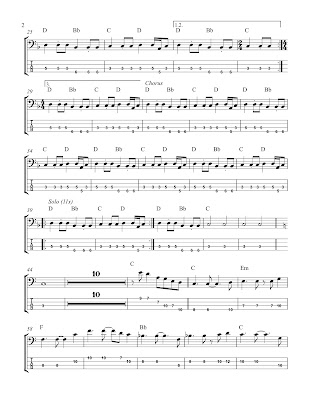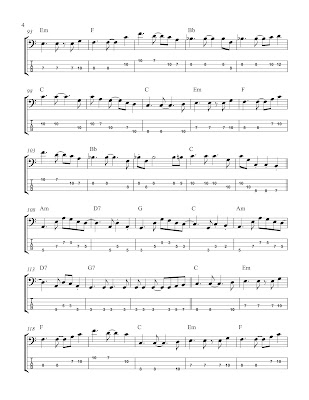(Eric Clapton and Jim Gordon)
From the Derek & the Dominos album Layla and Other Assorted Love Songs
The title track of the Dominos' album is tuned between D and Eb. Likely the band played in D, but then sped up the tape in the mixing process as a way of increasing tempo and/or heightening the energy.
Carl Radle plays another great supporting bass line on this song. In the intro, the guitar riff features a syncopated melody, with attacks falling largely on the off beats. Radle counters this by playing a very straightforward bass line. His quarter-eighth-eighth line accents each beat, which helps to emphasize the syncopation in the guitar riff. This section would have been far less effective had Radle chosen to play a bass line in rhythmic unison with the guitar. The guitar riff creates tension because it is playing against the underlying groove. By playing a simple pattern on the beat, Radle is able to heighten the excitement of the riff.
Also, notice Radle’s use of rhythmic motives in the verse. (A motive, also called a motif, is a short, but recognizable musical device. It can be melodic or rhythmic or both.) In the second half of the verse, he uses two primary motives, shown below as A and B.
Measures
5-6 in the verse rely solely on motive A, while mm. 7-8 utilize motive B.
Motive A can also be found embedded in the groove in the four preceding
measures. This use of rhythmic motives helps a bass line feel cohesive and well
developed.







No comments:
Post a Comment